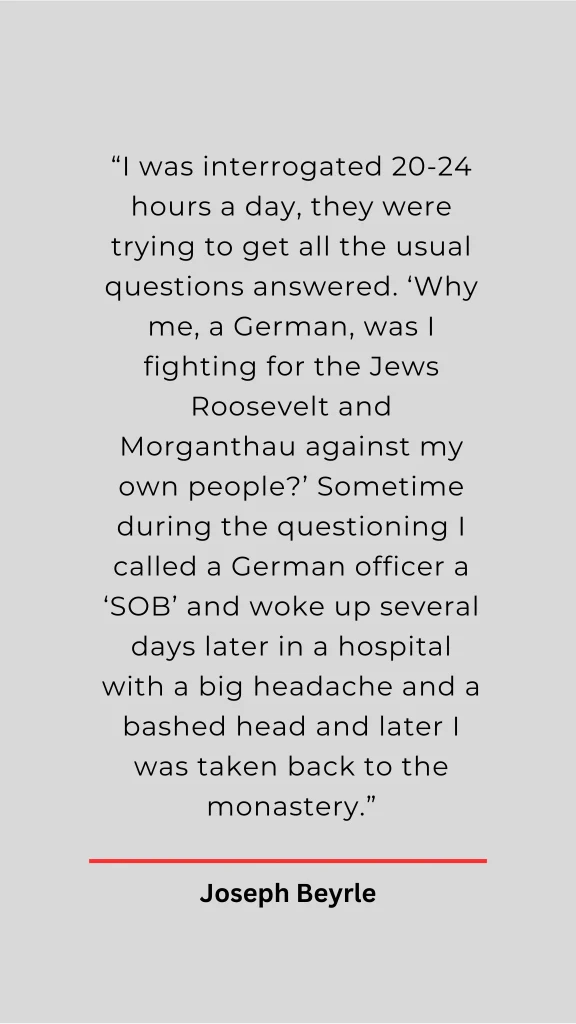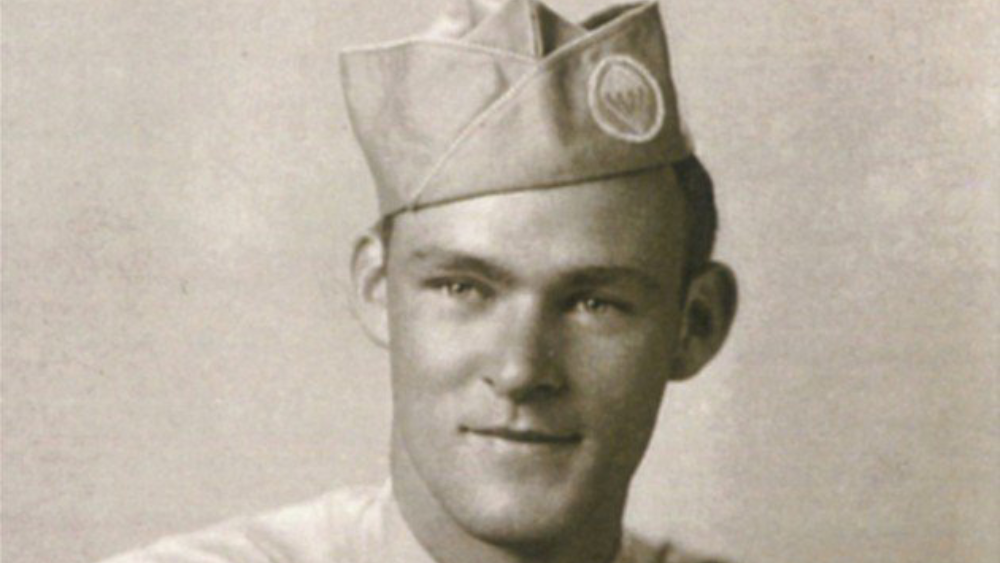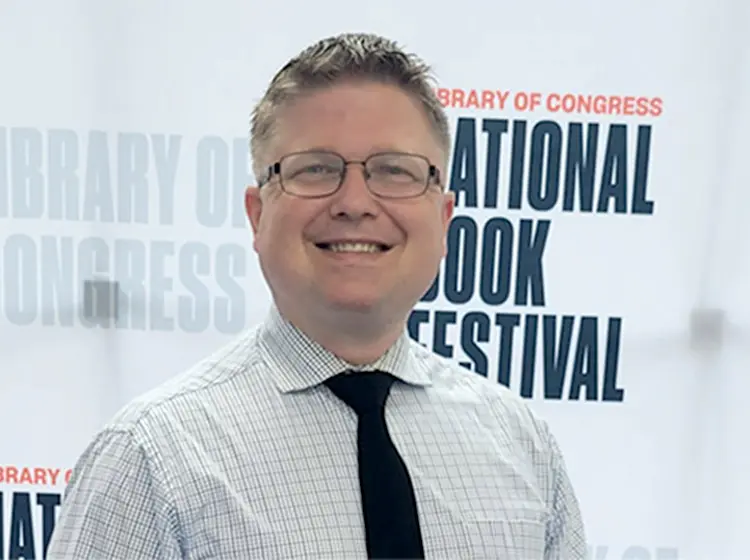In the vast tapestry of World War II history, there are countless stories of courage, sacrifice, and resilience. Yet, among the millions who served, one man’s journey stands out as not only extraordinary but entirely unique. Joseph R. Beyrle, an American paratrooper, is remembered as the only known U.S. soldier to have served in combat with both the United States Army and the Soviet Red Army during the war. His story is a riveting tale of survival, defiance, and cross-continental heroism—a testament to the unpredictable nature of war and the unbreakable human spirit.
Early Life and Enlistment
Joseph Beyrle was born on August 25, 1923, in Muskegon, Michigan, into a family of German descent. As a young boy growing up during the Great Depression, he developed an early appreciation for hard work and perseverance. These qualities would later define his military service.
Upon graduating from high school in 1942, Beyrle enlisted in the U.S. Army. He volunteered for one of the military’s most dangerous and elite divisions—the newly formed paratroopers of the 101st Airborne Division. His motivation? A strong desire to serve his country and participate directly in the liberation of Europe from Nazi control.
After rigorous training at Camp Toccoa in Georgia and Fort Benning, he joined the 506th Parachute Infantry Regiment, a unit that would later become famous for its role in Operation Overlord—D-Day.
Behind Enemy Lines: D-Day and Capture
In June 1944, Joseph Beyrle parachuted into Normandy during the early hours of D-Day. His mission was to sabotage German communication lines and infrastructure to assist the Allied beach landings. Although he successfully completed his assignment—destroying a power station—he was captured by German soldiers just a few days later in the town of Saint-Côme-du-Mont.
This was the beginning of a harrowing journey through seven Nazi prison camps. Despite several escape attempts, Beyrle was always recaptured. During one attempt, he jumped from a moving train, only to be caught again. He even endured torture at the hands of the Gestapo, who suspected him of being a spy. For weeks, he was beaten and interrogated at the hands of the Nazi secret police.
Eventually, the Gestapo handed him over to the German military, and he was sent to Stalag III-C, a prisoner-of-war camp in Brandenberg.
A Bold Escape—and an Unlikely Alliance
In early 1945, as the war raged on and the Red Army pushed westward into German territory, Beyrle made another escape attempt—this time successful. Escaping from the POW camp, he ventured eastward, hoping to reach American lines. However, realizing he was still deep in Nazi-controlled territory, he instead sought help from the approaching Soviet forces.
Joseph Beyrle’s knowledge of demolition and sabotage earned him the trust of a Soviet tank battalion. Remarkably, he was allowed to fight alongside them in their advance toward Berlin. The battalion he joined was under the command of Aleksandra Samusenko, one of the few female Soviet tank commanders.
For weeks, Joseph Beyrle fought with the Soviets, participating in skirmishes and assaults against German forces. He became an honorary member of the Red Army—a nearly unheard-of alliance for an American soldier at the time. Despite the language barrier and cultural differences, Beyrle found common ground with his fellow soldiers in their mutual hatred of fascism and determination to end the war.
However, this second chapter of his combat service came to a sudden halt when he was injured during an aerial bombing attack. He was hospitalized in a Soviet medical facility, where his presence raised eyebrows—and suspicions.
From Suspect to Hero
In the Soviet hospital, Beyrle faced a new challenge: convincing the Soviets that he was indeed an American soldier and not a spy. With the Cold War tensions not yet born but mistrust already lingering between allies, this was no small task.
Fortunately, he was able to provide documentation and contact the U.S. Embassy in Moscow. His identity was confirmed, and arrangements were made for his repatriation.
When Joseph Beyrle returned home in April 1945, his family was stunned. They had already held a funeral for him after being notified by the military that he had been killed in action during the Normandy invasion. Beyrle had, quite literally, returned from the dead.
Post-War Life and Recognition
After returning to the United States, Beyrle resumed civilian life with little fanfare. He married, had three children, and worked for the Brunswick Corporation in his hometown of Muskegon. This is where he remained for the rest of his life.
But his story was far from forgotten.
Over the decades, Beyrle’s incredible tale gained recognition, particularly during the waning years of the Cold War and the subsequent thaw in U.S.–Russia relations. In 1994, during a 50th anniversary commemoration of D-Day, Presidents Bill Clinton and Boris Yeltsin honored Beyrle in a joint ceremony in Washington, D.C.
He was awarded medals from both the United States and Russia, including the Bronze Star and the Purple Heart. He also received various Soviet military honors—an almost unprecedented collection of commendations from former Allied superpowers.
Books, documentaries, and museum exhibits have since featured his remarkable journey. In 2004, Joseph Beyrle passed away at the age of 81, but his legacy continues to inspire.

A Legacy of Unity in a Time of Division
Joseph Beyrle’s story is more than just a war epic. It is a powerful example of human resilience and the unpredictability of fate in times of global conflict. His experience vividly reminds us how the United States and the Soviet Union—two ideologically opposed powers—once cooperated during World War II. This unity was crucial during a time when the world faced an existential threat.
Beyrle’s life highlights the strange contradictions of war: He fought in one of the bloodiest conflicts in history, yet his story is one of brotherhood and shared struggle between nations. He faced brutality, yet persevered with grit. Although they declared him dead, he lived to witness leaders of once-divided nations honor his legacy.
In a modern world increasingly defined by borders and divisions, Joseph Beyrle’s journey stands as a symbol of common humanity in the face of unimaginable adversity.
The Importance of Remembering Stories Like Beyrle’s
Today, history can often feel abstract, reduced to dates, numbers, and strategic decisions. But stories like Joseph Beyrle’s bring history to life. They remind us that behind every battle map, there are individual human beings who faced incredible choices and took unimaginable risks.
Beyrle’s tale is also a reminder of how war can twist the expected into the extraordinary. No military plan, no strategic forecast, could have predicted an American paratrooper fighting with a Soviet tank battalion deep in Nazi territory. He forged his path through sheer will to survive and help defeat tyranny, not by following command.
Joseph Beyrle’s life encourages us to honor veterans not only for their service but also for their untold stories. These are the chapters that often don’t appear in history books yet profoundly shape our understanding of the past.
Conclusion: One Man, Two Armies, One Mission
Joseph Beyrle’s journey from Michigan to Normandy, then through Nazi prisons, and finally into the ranks of the Red Army is truly one of a kind. It is a tale that stretches across continents and defies national boundaries. In many ways, Beyrle embodied the very spirit of Allied cooperation. His boots on the ground for two nations that put aside their differences to confront evil.
He remains a rare figure in military history—not just for what he did, but for how his story bridges two worldviews, two cultures, and two armies. His life reminds us that even in times of great division, collaboration and courage can pave the way to victory.










